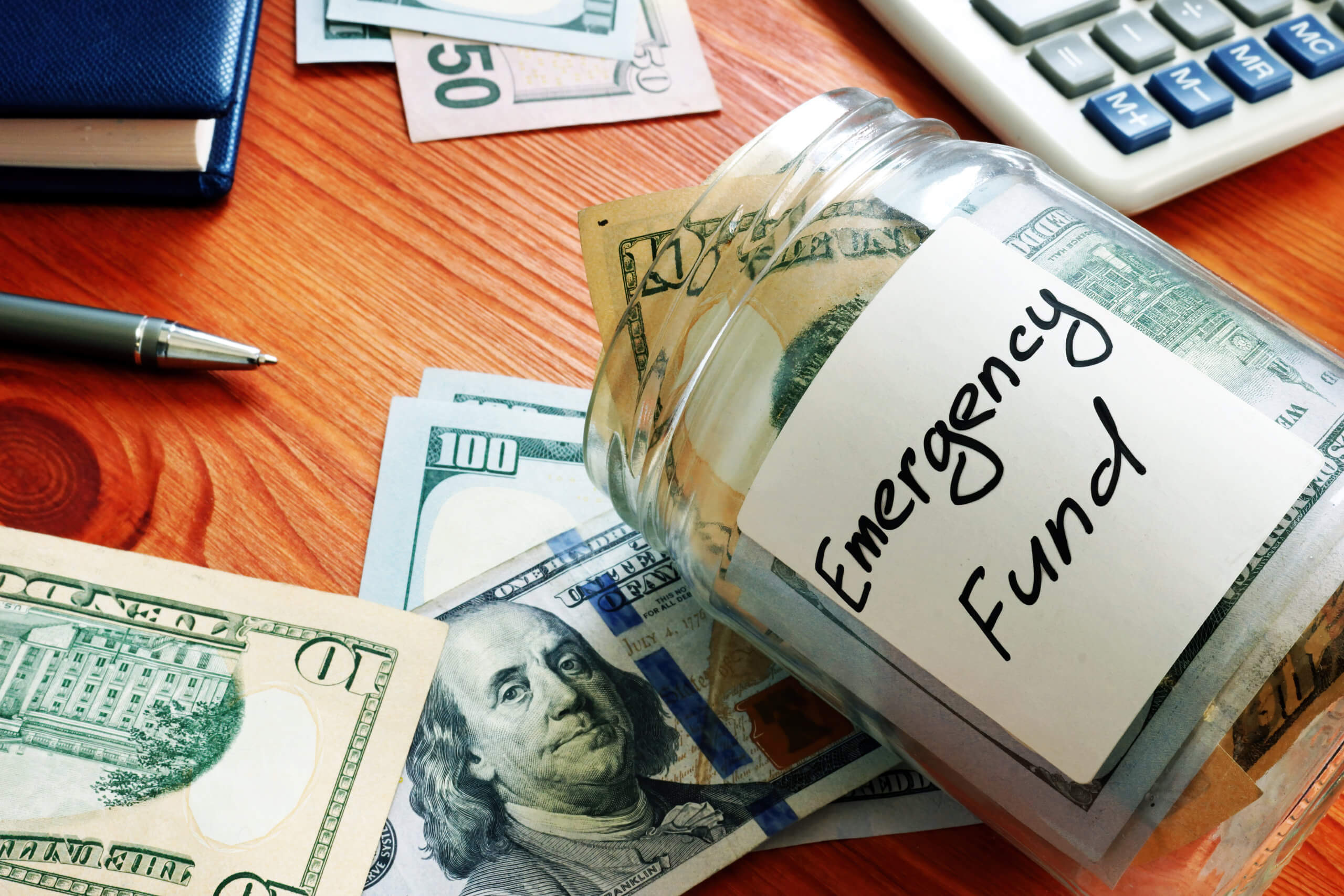Crises always seem to strike at the worst time. The next time you need unexpected car maintenance or a new HVAC system ASAP, a financial safety net could be in place to provide some resolution to these financial stressors. This can be accomplished by establishing and maintaining a cash reserve that is readily available in times of emergency.
Okay… so how much should I set aside?
While three to six months’ living expenses saved in cash is recommended by many financial advisors, the amount is dependent on your individual circumstances. Included in your living expenses calculation should be mortgage/rent, car payments, insurance payments, utilities, grocery money, etc. Other factors that may affect how much you should keep in cash is the stability of your employment/income, your health and health insurance coverage, and your other available assets, just to name a few. Without a cash reserve, emergencies such as unemployment or disability can put you in bad shape financially. Having an emergency fund for unplanned financial expenses can help to lessen the impacts of these financials blows.
I realize this is necessary, but how do I get started?
Whether you are starting from scratch or building up your current cash reserve, there are several tips to help you reach your goal and maintain it:
- Set a goal and be specific. Let’s say you are self-employed and your income is variable. Your goal is to have six months’ worth of expenses saved in cash. Calculate what that exact number should be and shoot for keeping that exact amount maintained in savings. This way you always know when to replenish or when to move on to the next financial goal.
- Save, save, save! If possible, use payroll deduction to save into your employer’s plan. If you don’t have an employer plan, use automatic transfers to help keep saving habits on autopilot. It’s getting in the regular habit of saving that is key.
- Reevaluate your spending habits. Are you spending too much money eating out? Have a pricey gym membership you don’t use regularly? Is your car payment more than you can really afford? See where you can cut back the fat in your spending and add to savings.
- Try increasing your income. Are there side jobs you can pick up to help add to your emergency fund? Do you have items you could sell? Maybe it’s time to ask for a raise at work? Tuck any increases in income directly into savings until your emergency fund is fully funded.
Can’t I just use my credit card in emergencies?
It is worth noting that a credit card or line of credit can be a secondary source of funding during emergencies. Borrowed money must be returned, though, and this is typically with a high interest rate. Using lenders, credit, or borrowed money as a main source for funding emergencies is not wise for this reason. In dire situations, it is an option, but it should be avoided.
I don’t keep this under my mattress, right?
Your cash reserve should be readily available for whenever you may need it. It’s recommended to keep it in an FDIC-insured, easily accessible bank account, in cash. Keeping it separate and not commingled with other funds is important.
Earning interest on your emergency fund is not as important as maintaining the emergency fund. Think of this cash as more like insurance to insulate you from having to go in to high-interest debt to make ends meet.
Those who are interested in higher interest-bearing accounts might consider money market accounts or short-term CDs.
When considering a money market mutual fund do not confuse it with a money market deposit account. A money market mutual fund is an investment account that is not insured, nor guaranteed by the FDIC. Carefully consider the money market mutual fund’s investment objectives, fees, expenses, and risks before investing. You can discuss these details with your advisor and work with them to determine which account best suits your needs.
Another consideration is the availability of this cash reserve. Certain fixed-term investments, particularly those that return your principal investment with interest on a set date (e.g. CDs), impose a significant penalty upon early withdrawals. If you wish to use fixed-term investments, staggering their maturity dates over two to five months is a way to ensure your funds will be available when needed.
Checking In
Both personal and financial circumstances change often. Change can look like a new child, a dependent parent, or a new home. When these changes occur it is important to consider how they may impact how much you should keep in your current cash reserve. For example, a larger, more expensive home may require a larger emergency fund amount than you had previously.
This cash reserve can be your greatest protection against financial devastation. Reviewing it annually to fit your changing needs is necessary. Windward advisors are happy to meet to discuss how much you should keep in your emergency fund.
This blog is provided by Windward Private Wealth Management Inc. (“Windward” or the “Firm”) for informational purposes only. Investing involves the risk of loss and investors should be prepared to bear potential losses. No portion of this blog is to be construed as a solicitation to buy or sell a security or the provision of personalized investment, tax or legal advice. Certain information contained in the individual blog posts will be derived from sources that Windward believes to be reliable; however, the Firm does not guarantee the accuracy or timeliness of such information and assumes no liability for any resulting damages.
Windward is an SEC registered investment adviser. The Firm may only provide services in those states in which it is notice filed or qualifies for a corresponding exemption from such requirements. For information about Windward’ registration status and business operations, please consult the Firm’s Form ADV disclosure documents, the most recent versions of which are available on the SEC’s Investment Adviser Public Disclosure website at www.adviserinfo.sec.gov.
